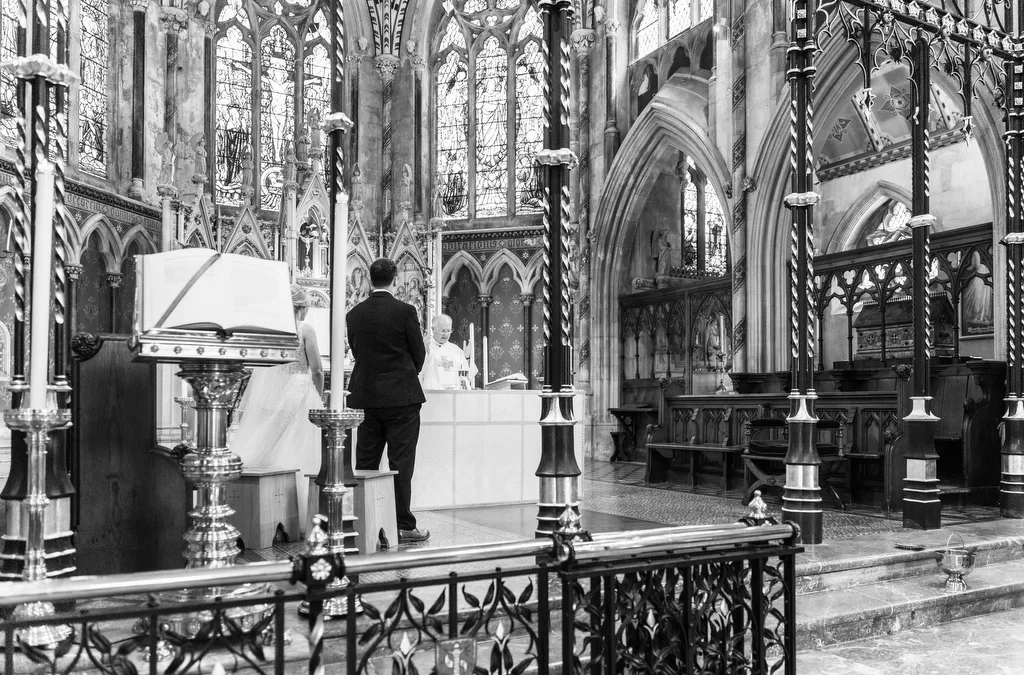Wedding photography is both an art and a science
Wedding photography is both an art and a science. Professional wedding photographers must have a keen artistic eye to capture the emotion and beauty of a couple’s special day. At the same time, they rely on technical skills and experience to efficiently photograph key moments without missing a beat. The goal is to produce a set of images that tell the story of the wedding and reflect the style and personality of the bride and groom.
Main Wedding Photography Styles
There are several predominant wedding photography styles that photographers use to approach their work:
Traditional Wedding Photography
- Focuses on classic, posed shots of the couple, wedding party, and family portraits
- Captures the major events and planned portions of the wedding day like the ceremony, reception events, and formal family pictures
- Typically produces more formal, technically excellent images
Photojournalistic Wedding Photography
- Focuses on unobtrusively photographing genuine, unposed moments as they unfold throughout the wedding and reception
- Tells the story of the wedding day through a series of candid photos instead of posed shots
- Results in more natural images that capture the energy and spontaneity of real-life events
Artistic or Fine Art Wedding Photography
- Focuses on creating artistic images with advanced techniques like dramatic lighting, shallow depth of field, unique perspectives, and post-processing
- Images have a more editorial, avant-garde style compared to traditional wedding photo styles
- The goal is to produce more creative, stylized images rather than documentary-style shots
Lifestyle Wedding Photography
- Focuses on capturing honest, often candid moments that reflect the vibe and spirit of the wedding in a beautiful way
- Incorporates both posed portraits and plenty of casual, unscripted images
- Images have a natural, unforced style and help illustrate the feel of the whole wedding day
Factors Impacting Wedding Photography Style
The photographer’s overall style and expertise naturally influence the type of wedding images they create. However, there are several other factors that can impact the photography style on the wedding day:
- Couple’s Style and Vision – Understanding the couple’s preferences and priorities helps shape the photography approach. Some couples may want lots of formal shots, while others request a documentary-style album.
- Venue and Setting – The location often influences opportunities for posed vs. candid shots. A highly-arranged ballroom wedding lends itself to classic wedding portraits. An outdoor garden wedding may yield more artistic, photojournalistic images.
- Weather and Lighting – Unpredictable weather may lend itself to more candid, variable lighting shots. Consistent sunlight yields clearer, more evenly lit images.
- Size of Wedding Party – Larger weddings limit time available for posed shots and guests interaction. Smaller weddings provide more flexibility.
- Wedding Schedule – Firm scheduling and tight timelines often result in more posed shots to maximize key moments. A relaxed timeline opens up creativity.
- Cultural/Religious Traditions – Some faiths have specific requirements like no photos during the ceremony that impact the photography style and moments captured.
Master of Wedding Photojournalism: Michael Gane
One photographer who has truly mastered the art of wedding photojournalism is Michael Gane. With over 10 years of professional experience, Michael takes a documentary approach to wedding photography that yields breathtaking artistic images.
Some signature features of Michael’s work:
- A natural, unposed style that captures candid moments and real emotions
- Advanced skills at shooting in challenging lighting scenarios like dim reception halls
- Technical expertise with off-camera lighting to create dramatic effects
- Skillful ability to fade into the background and go unnoticed while photographing key moments
- Artistic post-processing that enhances mood, emotion, and visual interest
Michael isn’t limited to just photojournalistic shots, however. He adeptly balances these candid images with perfectly executed formal portraits and group shots throughout the wedding day as well. The result is a comprehensive set of stunning photographs that tell the complete story of the couple’s wedding journey from start to finish.
Conclusion
Great wedding photographers are part artist, part scientist, and part storyteller. They blend technical skills with creative vision and narrative technique to produce images couples will treasure for a lifetime. There are several wedding photography styles, but the mark of a true master is the ability to fluidly move between poses, lighting techniques, and candid vs. formal shots as needed. With the right balance of expertise and artistic perspective, wedding photographers can capture the wonder, joy, and magic of each couple’s special celebration.

